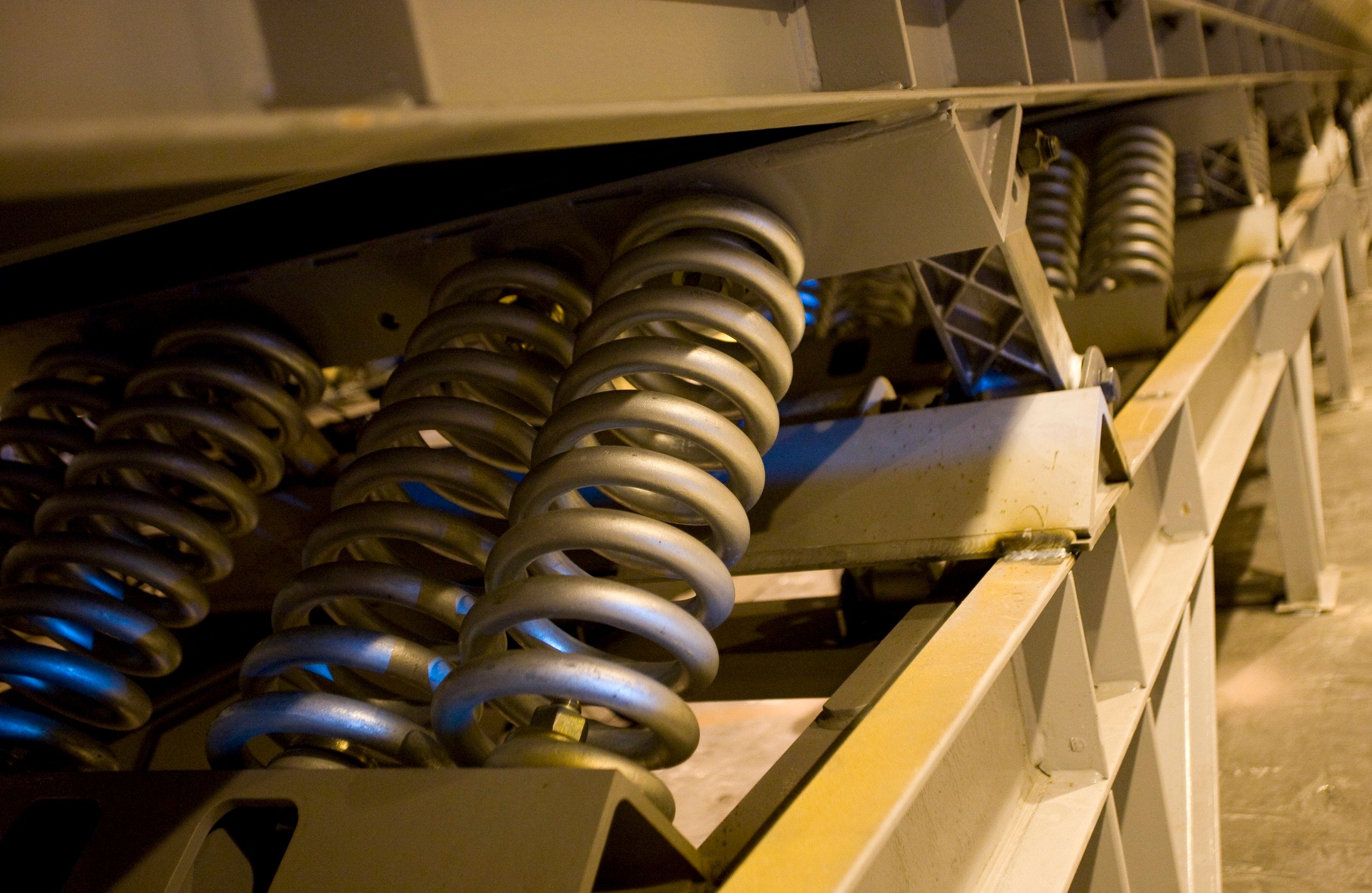Vibratory equipment, when properly maintained, can be some of the most valuable, and lasting tools in your foundry, mining, or materials processing operation. However, there are a few things you can do to extend the life of your equipment and ensure it continues running properly. It’s important to follow a maintenance routine for each component to reach optimal operation.
Vibratory springs, especially, require proper maintenance. They’re a critical component in your operation and undergo a lot of wear and tear in daily operation, so here are our tips for vibratory spring maintenance.
Unique Maintenance Needs for Your Vibratory Springs
Not all vibratory springs are identical, so when you start maintenance, you should know which type you have. In general, there are three types you might find on your vibratory equipment:
- Drive springs
- Reactor springs
- Isolation springs
Many of these come in coil form, but some may be“marshmallow” springs. You will, of course, need to maintain each one, taking into consideration the different structures. Coils may be easier to monitor, for example, while marshmallow springs may require a bit more effort.
In general, though, there are some spring maintenance tips that are consistent across types of vibratory springs:
- Make sure springs match in length and diameter. You want to have the same spring rate, and if different springs are installed together the system won’t operate correctly (or efficiently).
- Keep your springs clean. Depending on your specific operation, this may require more frequency. Any obstruction can cause damage to the spring putting your equipment at greater risk of damage.
- Check for nicks and small surface damage. Whether you have a metal coil spring or a rubber marshmallow spring, check for any surface damage. Any nicks, cuts, or chunks in metal springs can compromise their function, and rubber marshmallow springs can dry out and break.
- Replace springs in pairs. If you need to replace one spring on one side, especially coiled springs, you may have to replace the spring on the other side. Doing so prevents any height discrepancy or function differences that could cause damage. Make sure you are replacing two springs of the same color to avoid any other problems after installation.
- Use a regular maintenance schedule. It should go without saying, but make your spring check a part of your regular maintenance. If your springs develop a problem that goes unnoticed, it could compromise your operation and cost you in downtime and expensive repairs.
Maintaining Your GK Vibratory Springs
At GK, we offer springs with universal mounting configurations, which means they can be used on non-GK equipment to meet other manufacturers’ specifications. This allows you to maintain your vibratory system with GK’s high-quality springs. It also means higher quality springs that require less frequent replacement and easier maintenance. Learn more about what makes our vibratory springs different.







